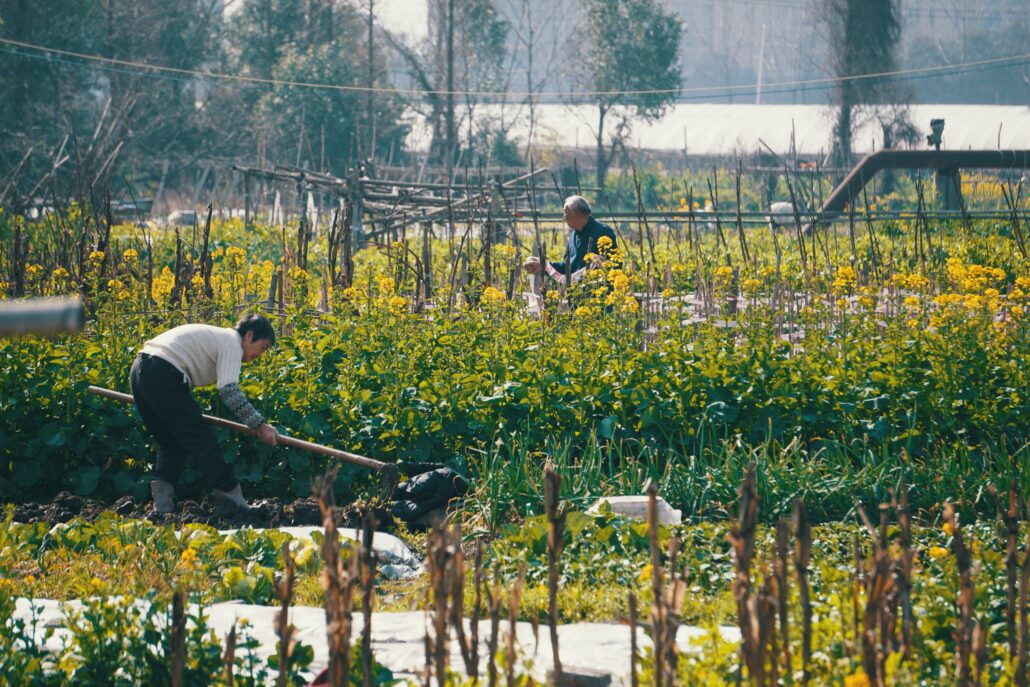
Community gardening is “a solution emerging from grassroots environmental and food movements” (Nettle 2010) While community gardens are often discussed as a progressive, new practice in sustainability, community gardens have been cultivated “since at least the nineteenth century,” when community gardens were grown by many working-class neighborhoods during large industrial periods (Lawson 2004).
Urbanization trends have led to factors such as “declining access to yard space and rising levels of physical inactivity,” (King 2008). These factors, combined with rapidly rising knowledge and worries about the current dominant food production regime, have led to the re-emergence of community garden projects across Canada and the world.
Motivations for Community Gardens: Previous studies on community gardens have reviewed the various motivations and community benefits (Byrne 2012) and provide valuable insight into the current movement. The vast majority of community garden studies cite “capacity building” as the main motivator of community gardens, as well as crime reduction, mental health benefits, community building, and physical health promotion (Holland 2004, Wakefield et al 2007).
Community gardens can mitigate some of the problems that plague urban areas. They can be a beneficial addition to many communities by increasing the availability of nutritious foods, strengthening community ties, reducing environmental hazards, reducing food miles, and creating a more sustainable system.
Community gardens can help reduce negative environmental impacts by promoting sustainable agriculture; reducing food transportation costs and reducing water runoff. Humans, plants, and animals can all benefit from urban agriculture since it creates habitats and improves the ecology of the area.
Importance Of Community Gardens
- Increase access to fresh foods
- Improve food security
- Increase physical activity through garden maintenance activities
- Improve dietary habits through education
- Increase fruit and vegetable intake
- Reduce the risk of obesity and obesity-related diseases
- Improve mental health and promote relaxation
Types of Community Gardens
Community gardens are as varied as the neighborhoods in which they thrive. Each is developed to meet the needs of the participants who come together on common ground to grow fruits, vegetables, flowers, herbs, and ornamental plants. Community gardens can be found at such diverse locations as schools, parks, housing projects, places of worship, vacant lots, and private properties.
While all these gardens serve as catalysts for bringing people together and improving the community, some of them focus on growing food for the gardeners themselves. Others donate their produce to the hungry. Some focus on education, some on nutrition and exercise, still others on selling produce for income. Some simply provide a venue for sharing the love of gardening. All community gardens provide opportunities for neighborhood renewal and beautification.
- Plot Gardens

One familiar strategy is to subdivide the garden into family-sized plots ranging in size from 100 to 500 square feet. Sometimes a section of the garden is reserved for the community to grow crops too large for individual plots (corn, pumpkins, watermelons, fruit trees, grapes, berries). Gardeners divide the bounty from these shared plots.
- Cooperative Gardens

In a cooperative garden, the entire space is managed as one large garden through the coordinated efforts of many community members. Produce from the garden is sometimes distributed equitably to all the member gardeners. Often these gardens are associated with communities of faith, civic groups, or service organizations that donate part or all of the products to charitable organizations such as food banks and soup kitchens.
- Youth Gardens
With the increasing interest in science and nutrition education, many primary schools in Canada are planting gardens to serve as outdoor learning laboratories.
In the garden, everyone is transformed into a scientist, actively participating in research and discovery. Besides providing a motivating, hands-on setting for teaching skills in virtually every basic subject area, the garden is a wonderful place to learn responsibility, patience, pride, self-confidence, curiosity, critical thinking, and the art of nurturing. Usually, raised-bed gardens, or a section of the school landscape, are assigned to classes.
Hands-on curricula and activities are selected to supplement and support the standard course of study for science and nutrition for specific grade levels. In some cases, school gardens require extensive volunteer support so that classes may be split into small groups of children to work in the garden.
- Entrepreneurial Gardens
Gardeners, young and old, learn business principles and skills by growing and selling produce for local markets and restaurants. Many children have no idea where food comes from before it arrives in the supermarket. They have never seen a garden and have no skills in growing food. At entrepreneurial market gardens, youth learn not only how to grow food but also how to sell it at local farmers’ markets or grocery stores.
- Therapeutic Gardens
Still, other gardens focus on horticulture therapy, using plants to improve the social, educational, psychological, and physical well-being of the gardeners and their caregivers, family, and friends. Located in hospitals, nursing homes, assisted living facilities, retirement communities, outpatient treatment centers, botanical gardens, and other settings, therapeutic gardens are generally designed to be accessible to people with physical limitations.
They may include raised beds and firm pathways to provide access to participants in wheelchairs, Braille signage for blind gardeners, special tools for gardeners with limited physical strength, and other accommodations. Therapeutic gardens may be designed for active gardening programs or as a quiet space for reflection.
What is the difference between a community garden and an urban farm?
The differences between community gardens and urban farms are nuanced, though in the end, the same basic activity takes place—food crop cultivation— but within different organizational structures. In the urban farm model, you have a fewer number of people spending more time working on about the same area, whereas the community garden has more people working on smaller plots.
Urban farms are generally more business and technology-oriented, with the primary purpose of maximizing yields and selling produce. Commercial urban farms are often aimed at expanding production on the generally small land area with innovations in technologies such as aquaculture, hydroponics, and greenhouses — and may partner with a commercial kitchen to create locally-produced value-added products such as jams and sauces.
Community gardens on the other hand are generally more socially driven, focused on the benefits of having green spaces and the educational access that grows from them. The produce is normally grown on a much smaller scale and is taken home to eat at home or to share. By providing much-needed green spaces in destitute, concrete urban areas, they allow for the benefits of backyard gardening to those lacking backyards and serve as excellent examples of self-organization and community activism.
